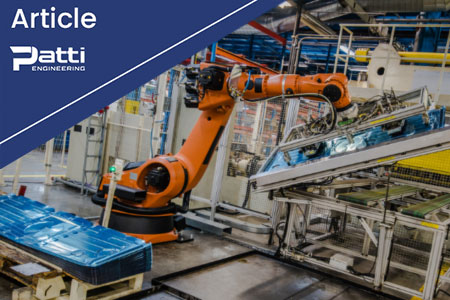
Uncaging Your Industrial Robots
You probably already know that traditional industrial robots can be used in places that are too dirty, dangerous, or dull for humans. In fact, manufacturers have often used them for applications like lifting car frames, palletizing heavy items, or spraying hazardous chemicals. Despite their usefulness, manufacturers tend to keep robots in cages due to safety issues. Uncaging your industrial robot can actually be a great option, as long as the proper safety parameters and features are in place.
In this article, we’ll highlight the proper safety precautions you need to take when uncaging your robot. First, we’ll start by discussing collaborative robots.
Collaborative Robots
Collaborative robots have become more popular over the last decade. These robots are designed to directly work side-by-side with human workers. They are much smaller than traditional industrial robots, and come with built-in safety features around their speed. Collaborative robots can also sense when they may strike a person, and can safely stop movement before causing damage.
Uncaged Industrial Robots
Both traditional and collaborative robots have their place in the manufacturing world. However, there is a third option that you need to consider—uncaged robots. If you need an industrial robot that can work in proximity to humans, but also has the sturdier features of traditional robots (speed, weight capacity, heat tolerance, etc.,), then this is the option for you.
What to Do Before Uncaging Your Industrial Robot
Patti Engineering has helped countless manufacturers implement uncaged robots in the workplace, and we’re happy to help you too. If you’re thinking about uncaging your robot, take a look at our safety tips below.
Perform a Risk Assessment
First, you need to have a qualified company conduct an RIA (Robotics Industrial Association) Risk Assessment, before planning any type of robot installation. Patti Engineering is qualified to perform such assessments.
Incorporate Safety Scanners
Second, you need to incorporate safety scanners. One of the most common risks is the speed of the robot in proximity to the human. To address this risk, a safety scanner will detect when a person is in range. When someone is close, the robot slows down to 125 millimeters per second, which is a safe speed. When the person is within the footprint of the robot, it stops. Therefore, the operator could go right up to the part, check it, and walk away. As soon as the person is out of range, the robot automatically starts back up.
By using appropriate safety scanners and other safety measures, you can control the robot to a slow speed and stop it, depending on where an operator is in relation to the robot. This will allow you to get the speed of an industrial robot while making servicing and inspections more accessible and safe.
Implement Safety Light Curtains
Lastly, you should implement a light curtain scanner. This scanner provides the sensing for the overall safety system. You can use these scanners with Siemens controls and safety hardware, including a safety PLC. Everything can be easily connected through Profinet.
Case Study
In a recent application, one of our clients had a very tight work area with a lot of equipment. The guarding/caging around the robot was actually creating more potential pinch points between the robot and the guarding. So, removing the guarding was actually a safer option. We were able to help our client uncage their robot and create a better safety system. Our solution included integrating their existing guarding into the safety system. So, with our solution, we were able to uncage the robot while protecting the workers from part-related injuries.
Bonus: Equipment Effectiveness
Uncaged industrial robots can have a positive effect on the facility’s OEE (overall equipment effectiveness). Because the robot automatically restarts, you won’t have to worry about an operator forgetting to push a button, and no time is missed in getting right back to the task.
Have Questions? Call Patti Engineering Today!
Founded in 1991, Patti Engineering is a CSIA-certified integrator; we’re partnered with industry-leading manufacturers, including Siemens, Mitsubishi, and FANUC. We have extensive experience in helping manufacturers uncage their industrial robots. If you are looking for a creative solution to a dirty, dull, or dangerous task in your facility, contact us today.
Related categories: Blog Robotics

